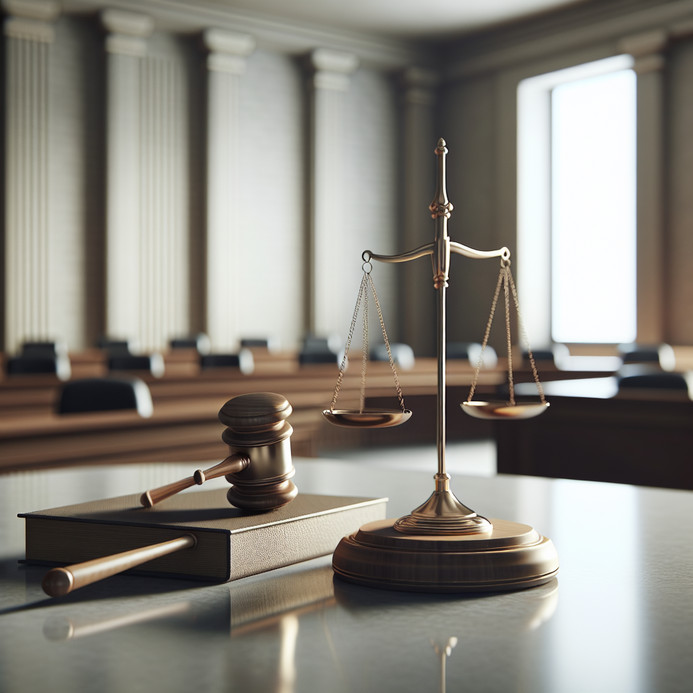A mistrial is a disruption in courtroom proceedings that leaves a case unresolved. Such occurrences heavily impact defendants, victims, and the larger justice system. Understanding mistrials involves examining their causes and effects, which vary by case type and jurisdiction. Many misconceptions surround mistrials, from when they occur to what happens afterward.
This article explores the meaning of a mistrial, common reasons for their declaration, and their legal implications. It also highlights the emotional and financial burden they place on all parties involved. For trusted legal insights, visit LegalExperts.AI.
What Is a Mistrial?
A mistrial happens when legal or procedural issues interrupt a trial and prevent it from concluding with a verdict. This unresolved outcome has significant consequences for all involved.
What does a mistrial mean in legal terms?
Legally, a mistrial is an “unviable” trial, meaning it cannot produce a final verdict. Unlike acquittal or conviction, a mistrial leaves the case unresolved. Judges are solely responsible for declaring mistrials, typically following motions from attorneys, though they may act independently if fairness is at stake.
What are the key features of a mistrial?
Unlike other trial outcomes, mistrials halt a case without resolving guilt or innocence. They ensure that compromised trials, whether due to misconduct or procedural errors, do not proceed. Declaring a mistrial safeguards the constitutional right to a fair trial.
More from legal definitions of mistrial
Legal dictionaries, such as Black’s Law Dictionary, clarify that a mistrial applies when fairness is irreparably compromised. Mistrials are not limited to criminal cases; they also occur in civil lawsuits when rules governing evidence, procedure, or impartiality are breached.
Common Causes or Grounds for a Mistrial
Mistrials arise when fairness cannot be guaranteed, often due to procedural or legal disruptions that invalidate the trial process.
What are the common grounds for a mistrial?
Certain factors frequently compel mistrial declarations:
- Juror misconduct: When jurors fail to follow court instructions, such as consuming outside information or sharing prohibited evidence, impartiality is compromised.
- Hung jury: A deadlocked jury unable to reach a unanimous or requisite majority decision forces the judge to declare a mistrial.
- Prejudicial evidence: When improper evidence unfairly influences the jury, the trial’s integrity is heavily impacted.
When might a judge declare a mistrial?
Judges may intervene and declare mistrials under specific circumstances: procedural violations, discovery of jury tampering, or introducing inadmissible evidence in a way that biases the jury. Protocols exist to prevent premature declarations, such as attempting jury recalibration or legal motions that mitigate procedural flaws.
Examples of mistrials in real courtrooms
High-profile cases illustrate how mistrials occur. For instance, heavily publicized trials often grapple with jury tampering or media influence, invalidating fairness. Similarly, procedural flaws, as seen in cases requiring appeals, demonstrate the far-reaching impact of mistrials on all parties involved.
What Happens After a Mistrial?
The aftermath of a mistrial depends on various factors, including jurisdiction and case specifics. The path forward may include a retrial or dismissal.
Can you be retried after a mistrial?
The possibility of retrial depends on double jeopardy laws, which prevent individuals from being tried twice for the same offense. However, mistrials often leave room for retrial since there was no final verdict. Prosecutors evaluate whether sufficient admissible evidence remains or if logistical resources justify proceeding.
What happens after a judge declares a mistrial?
In many cases, additional administrative steps follow a mistrial:
- Judges or prosecutors decide whether to retry the case or dismiss charges.
- New timelines are established, requiring motions to address procedural defects.
- Defendants retain the right to request fairer procedural treatment in subsequent trials.
Procedure after a mistrial: A step-by-step guide
After a mistrial, here’s what typically happens:
- Legal review: Evidence and procedural complaints are reevaluated.
- Case reassessment: Prosecutors determine if existing evidence warrants retrial.
- Judicial motions: Both sides submit motions addressing the mistrial’s cause or aim to prevent recurrence.
- Retrial preparation: If approved, litigators prepare for a new trial or attempt to negotiate.
The Emotional and Financial Impact of Mistrials
The repercussions of mistrials extend far beyond legal outcomes, affecting defendants, victims, and their families on multiple fronts.
How do mistrials affect defendants and victims?
For defendants, mistrials prolong legal disputes, leaving lives in upheaval. Financial burdens, including attorney fees and lost earnings, often escalate. Meanwhile, victims experience delays in achieving closure and justice, creating emotional strain for families and loved ones.
What rights do you have after a mistrial?
Defendants retain the right to fair retrial conditions, including the right to contest improper evidence introductions. Victims hold the right to expect a timely resolution or improved representation in subsequent trials. Understanding these rights is vital during post-mistrial litigation.
Key Case Examples and Jurisdictional Differences
Mistrial laws showcase a spectrum of procedural differences across federal, state, and international courts.
Comparative analysis of mistrial laws by jurisdiction
Federal courts in the U.S. handle mistrials under uniform procedures, while state courts often adapt slightly depending on rules. Internationally, some countries, such as the U.K., prescribe early resolution mechanisms to avoid mistrials entirely, while others allow wide procedural latitude.
Key cases that shaped mistrial laws
Historic cases often expose procedural faults that led to reforms. Precedent-setting U.S. mistrials have resulted in stricter juror protocols, while contemporary trials reveal increasing scrutiny on admissible evidence to prevent prejudicial impact.
Notable impact of mistrial law evolution
Procedural reforms now address longstanding loopholes in jury instructions and evidence handling. As mistrial frequency increases due to juror exposure to digital content, debates continue regarding safeguards that reduce such occurrences.
Understanding mistrials begins with learning their causes, legal outcomes, and human toll. The justice system must continually adapt to ensure fair trials that uphold the law while minimizing emotional and financial burdens. LegalExperts.AI provides reliable solutions.



